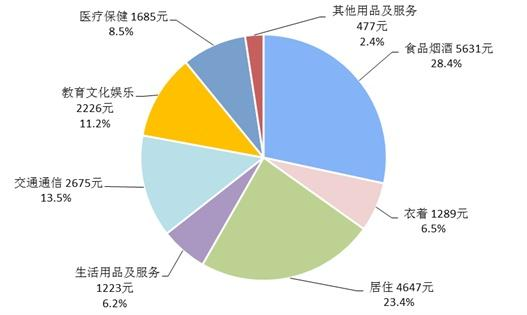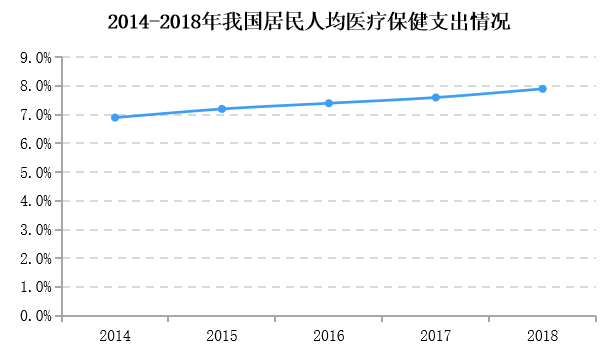A 4D interpretation of the functional food industry.
Editor’s note: This article comes from the WeChat public account “Sophisticated GymSquare” (ID: GymSquare) , Author Gavin.
What is functional food
The generalization of the connotation of functional food, the double innovation of “face” and “lizi”, to meet the personalized needs of users, which is opposite to the concept of “daily catering”.
Traditional functional foods are actually what we call “health foods” in daily life-they have specific nutritional and health care functions, are suitable for consumption by specific groups of people, have the function of regulating the body, and are not intended for treatment. According to laws and regulations, it must meet four requirements:
-
Non-toxic, harmless, and meets the required nutritional requirements;
-
The function must be clear and specific, and it is affirmed after scientific verification. At the same time, its function cannot replace the normal dietary intake of the human body and the requirements for various essential nutrients;
-
Functional foods are developed and produced for specific people who need to adjust certain aspects of body function;
-
It is not intended for treatment and cannot replace the therapeutic effect of drugs on patients.
Functional foods can preventively supplement nutrients for healthy people, and also promote the rehabilitation process for people with abnormal physiological functions. The main differences between it and medicines are: higher safety requirements; free ingestion without prescription; and no substitute for the therapeutic effect of medicines. According to regulations, functional foods must be certified by the State Food and Drug Administration and marked with the words “health food”.
Today, no matter the brand ’s publicity or consumers ’category awareness, the content of“ functional food ”has been enriched a lot, mainly reflected in:
// Product level differentiation
In the past, the efficacy of health food and the formulation of active ingredients were relatively transparent, and the degree of homogeneity of some core categories at the end of the supply chainVery high, taking the form of an oral solution that relieves fatigue and improves sleep quality as an example, almost all companies fill syrup with highly convergent active ingredients. Apart from fine-tuning in taste, the difference is minimal, the channel Marketing materials often become the core element that determines market share.
But now, many new changes have been added to the product form. From oral liquids, capsules, effervescent tablets, chewable tablets, etc., soft candy, dairy drinks, ice cream, etc. have been added to “health products that are not so much like health products.” “These perceptions of these differences are extremely strong on the consumer side, and even a meticulously packaged” easy-to-map “on social media can quickly gain popularity and meet many publicity resources.
On the other hand, under “face”, “lizi” also has a lot of technology-driven innovations: using sweeteners to reduce sugar, artificial meat instead of red meat, biological living peptides are widely used, ginseng, red dates, barley New methods of eating traditional health food ingredients are also emerging. These innovations are either best in taste, or have obvious improvement in efficacy, or resonate in brand tone, and the marketability has quickly been initially verified.
The double innovation of product form and effective ingredients has resulted in a lot of differentiation at the product level, which has strongly promoted the development of the market.
// Diverse audience needs
The State Food and Drug Administration has updated the functional scope of health products in 2016, covering the following 27 items:
Enhance immunity; assist in lowering blood lipid; assist in lowering blood sugar; antioxidant; assist in improving memory; relieve visual fatigue; promote lead expulsion; clear throat; assist in lowering blood pressure; improve sleep; promote lactation; relieve physical fatigue; Tolerance; Auxiliary protective function against radiation hazards; Weight loss; Improve growth and development; Increase bone density; Improve nutritional anemia; Auxiliary protective effect on chemical liver injury; Remove acne; Remove chloasma; Improve skin moisture; Improves skin oil content; regulates intestinal flora; promotes digestion; laxative; has auxiliary protective function on gastric mucosa damage
Even after 4 years now, these 27 functions are very complete, covering almost all popular functions.
However, user needs do not stop at functionality. In the real world, user demand is a complex proposition, and the delivery of this proposition by the brand is the user experience.
The development of categories is actually the evolution of user experience. If the user experience is disassembled and different weights are assigned to each item, it can be roughly expressed as: user experience = A × product + B × marketing + C × channel + D × service + E × scene + F × society Group + G × price.
Among them, the product factor is very important, and often has a higher weight in the entire user experience. But the category development is a spiralCheng, product power innovation often encounters bottlenecks in stages, and user experience is not always in a period when product power is paramount.
Taking the functional food discussed in this article as an example, when we conducted industry research and user research, we found that user needs are very diverse: sometimes the price is “grounded gas” , “Long-term repurchase is not distressed”; sometimes it is “convenient to buy” and “inspire impulse consumption”; sometimes it is “easy to carry” and “shareable with friends and relatives”; sometimes it is “self-realization” and “brand concept” “Identify”.
These requirements are less relevant to products, but more closely related to other factors such as prices, channels, and services. Responses to these needs can improve the user ’s overall experience, which is reflected in popularity and sales.
The aforementioned differentiation at the product level is actually the result of the diversification of audience needs to inspire brand innovation; another inevitable result of the diversification of user needs is the innovation of marketing, scene, community and other factors, sometimes comparable Product innovation leverages higher growth leverage.
With product-level differentiation, diversified audience needs, and three-dimensional marketing channels (limited to space and level not to be expanded), it can be said that “functional food” in the broad sense is actually “Fundamental food” corresponds to the supplement / optimization / replacement of daily Chinese catering.
Chinese food has its advantages, such as relatively low intake of fast sugar, insufficient intake of saturated fatty acids, and ideal vegetable intake (dietary fiber) in most cuisines. But it also has many problems, the core points are as follows:
-
The intake of salt and some trace elements is significantly higher;
-
Protein (especially excellent protein) intake is low;
-
The proportion of carbohydrates is high (almost all cuisines are like this).
It is very difficult to change eating habits, so these problems of Chinese food and beverage will exist in the past, present and foreseeable future, leaving a large room for innovation in functional food: high salt content-reduce condiments Use; low protein-increase the supply of high-quality protein (such as fish); high carbohydrates-reduce sugarPoints / fine carbon water, etc.
Today, when we talk about “functional food”, the scope has often been expanded to include light food, meal replacement, supplements, healthy snacks, and new beverages. These categories can provide corresponding solutions to make up for the shortage of Chinese catering at one or a few points.
On the other hand, the user group is younger, the category preference is westernized, the consumption ability and willingness have been verified, and the room for growth is expected.
■ National per capita consumption expenditure and composition in 2018
■ Per capita health care expenditure of Chinese residents from 2014 to 2018
With the increase in residents ’per capita disposable income and per capita consumption expenditure, residents’ demands for quality of life are also constantly improving, and the proportion of food, tobacco and alcohol as a core consumer category is stable (5631 yuan, 28.4%).
At the same time, the amount and proportion of health care expenditure per capita have been steadily increasing year by year, and with the adjustment of macroeconomic structure, social aging, medical insurance reform and other factors, it is expected to further increase.
Functional food is not only in the category of food, tobacco and alcohol, but also has certain medical health attributes, and has a very broad market base.
But limited by the lag of category development, consumer perception, channel iteration, marketing innovation and other factors, the annual consumption of functional food in China is only US $ 29, far behind the international advanced level (2019 on the Internet) Annual data: US $ 122 in South Korea; US $ 168 in Japan; US $ 236 in the US).
As the emphasis on health care is shifting from “treatment” to “prevention”, 25- to 45-year-olds with strong consumption ability and willingness are increasingly concerned about their own health, driving the entire functional food market rapidly increase.
-



